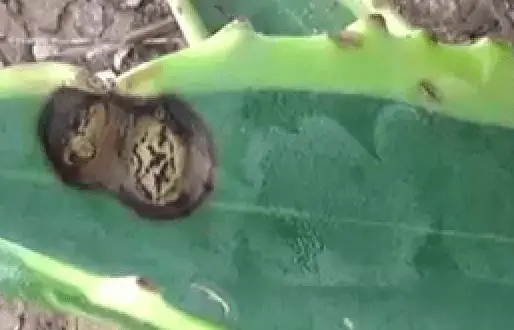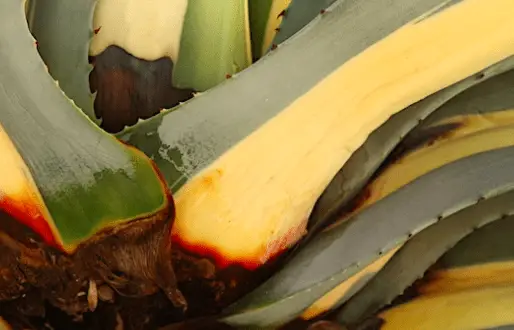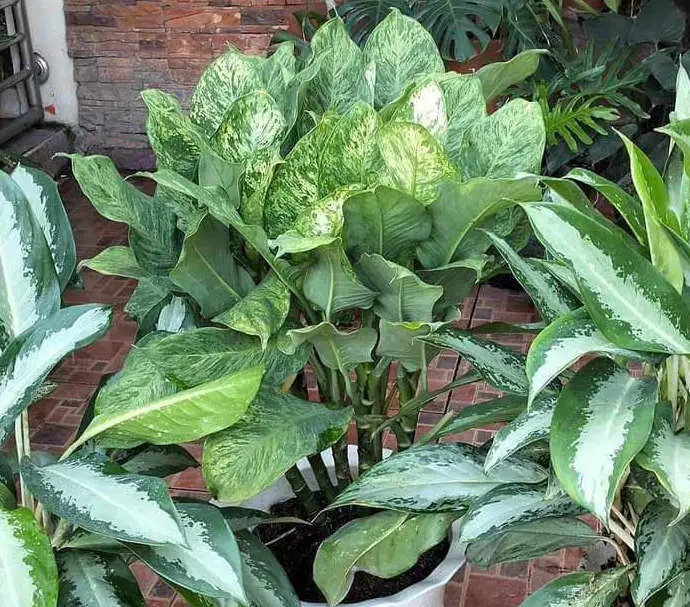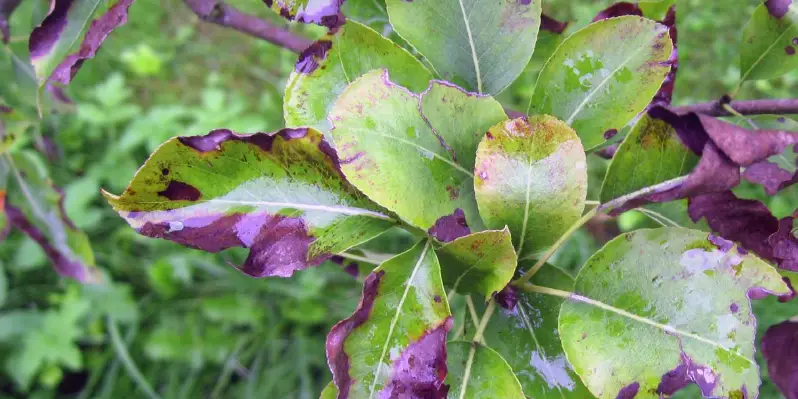Agaves are succulents native to Mexico that are popular in gardens because of their striking appearance. The leaves of an agave plant are thick and fleshy and often have sharp spines along the edges.
However, sometimes agave leaves develop brown spots. In this blog post, we’ll discuss the possible causes of brown spots on agave leaves and how to treat them.
Why Does My Agave Have Brown Spots?
Brown spots on agave plants are usually the result of Anthracnose fungus, overfertilization, too much sun, pest infestation, and edema. Fungal infections are generally the source of these problems, but they may also be caused by any one of them.
The browning of your agave will give clues as to the underlying problem. For example, anthracnose fungus tends to leave blotchy, brown spots on the leaves, while too much sun will cause the leaves to turn brown and dry out.
I will now go through each of these potential causes one by one so that you can narrow down the source of your problem and take steps to fix it.
1. Anthracnose Fungus
Anthracnose fungus is a type of fungal infection that can affect many different types of plants, including agaves. This fungus thrives in warm, wet conditions and can cause the leaves of your plant to develop brown spots.
To treat this problem, you’ll need to remove any affected leaves from your plant and dispose of them. You should also make sure to clean up any fallen leaves or debris around your plant, as the fungus can spread quickly in these conditions.
You can also treat the problem with a fungicide to prevent the fungus from spreading. This will kill any remaining fungal spores on your plant and help to prevent the problem from coming back.
Neem oil is a natural fungicide that can be used to treat Anthracnose fungus. Neem oil is made from the seeds of the neem tree and is safe for use on all kinds of plants.
To use neem oil, mix it with water at a ratio of about two teaspoons of oil per quart of water. Then, apply the mixture to your plant, being sure to coat all of the affected areas. You should see results within a week or two.
If you don’t want to use neem oil, you can also try treating the problem with a copper fungicide. This will kill the fungus and help to prevent it from spreading. You can find copper fungicides at your local nursery or garden center.

2. Over-Fertilization
Over-fertilization is another common cause of brown spots on agave leaves. When you fertilize your plant, you are essentially giving it a boost of nutrients that it needs to grow.
However, if you fertilize too often or use too much fertilizer, the excess nutrients can build up in the soil and start to burn the roots of your plant. This can cause the leaves to turn brown and dry out.
To prevent this problem, you should only fertilize your agave when it is actively growing, which is typically in the spring and summer. You should also use a light hand when applying fertilizer, as too much can damage your plant.
If you think your plant may be suffering from over-fertilization, you can try leaching the soil to remove some of the excess nutrients. To do this, water your plant deeply and then allow the water to drain away. This will flush some of the nutrients out of the soil and help to improve the health of your plant.
You can also try repotting your agave in a fresh, clean potting mix. This will give it a fresh start and help to replenish any nutrients that may have been lost.
3. Pest Infestation
Pests can also be a cause of brown spots on agave leaves. These pests include mealybugs, scale insects, and aphids. All of them feed on the sap of your plant, which can cause the leaves to turn brown and dry out.
You see, when pests feed on the sap of your plant, they essentially suck out all of the nutrients. This can cause the leaves to turn brown and eventually die.
To get rid of pests, you’ll need to treat your plant with an insecticide. Again, neem oil is a great natural option that is safe for use on all kinds of plants.
To use neem oil, mix it with water at a ratio of about two teaspoons of oil per quart of water. Then, apply the mixture to your plant, being sure to coat all of the affected areas. You should see results within a week or two.
If you don’t want to use neem oil, you can also try treating the problem with a chemical insecticide. Be sure to follow the instructions on the label carefully, as these products can be toxic if used incorrectly.

4. Edema
Edema is a condition that can cause brown spots on agave leaves. It occurs when the plant takes up too much water and the cells in the leaves become bloated and full of water.
This can happen if your plant is sitting in water for too long or if the soil is too wet. When the cells in the leaves fill with water, they start to burst and the leaves turn brown.
To prevent edema, be sure that your plant is sitting in well-draining soil. If your agave already has edema, you should dry the soil out completely and then allow the plant to rest in dry soil for a few days.
5. Too much sun
While agave are sun-loving plants, too much sun can also cause brown spots on agave leaves. If your plant is getting too much direct sunlight, the leaves can start to scorch and turn brown.
To prevent this problem, you should make sure that your plant is getting the right amount of sunlight. Agaves typically need about six hours of sunlight per day, so be sure to place them in an area that gets plenty of light.
If your plant is already getting too much sun, you can try moving it to a shadier spot. You can also try covering the leaves with a light cloth or piece of burlap to protect them from the sun’s rays.
Should I Prune Agave Leaves with Brown Spots?
There only time I recommend pruning agave leaves is when a fungal infection is present and the leaves are starting to rot. If you prune healthy leaves, it will put unnecessary stress on the plant. Also, when you prune agave plants, make sure to sterilize your cutting tools before and after use. This will help prevent the spread of disease.
To sterilize your cutting tools, you can either dip them in rubbing alcohol or you can use a bleach solution. To make a bleach solution, mix one-part bleach with nine parts water. Then, soak your tools in the mixture for about five minutes.
After pruning, it’s also important to dispose of the affected leaves properly. Don’t just throw them in the trash because this could spread the disease to other plants. Either burn the leaves or place them in a plastic bag and put them in the freezer.
Conclusion
In conclusion, there are a few different reasons why agave leaves might turn brown. It could be due to fungus, overfertilization, too much sun, pest infestation, or edema.
I hope this article was helpful in diagnosing the problem with your agave plant. Brown spots on agave leaves can be caused by a number of different things, but luckily, they’re all fairly easy to fix when you know what to do.
Tim is an avid gardener from the UK. He was the founder of PlantCarer.com from 2021 to Sep 2023. He sold PlantCarer.com to Aaron. He has since started his own business called Seed To Supper, which provides new gardeners all the materials you need in a box (pots, seeds, compost and instructions) to grow your own delicious and nutritious vegetables and herbs from start to finish – no garden required.








0 Comments